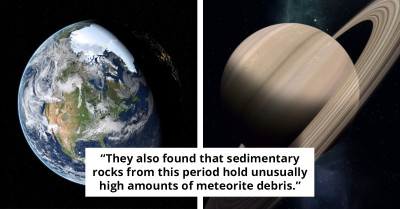Scientists Stumped by Bizarre Signals Deep Within Antarctica
Sometimes, even with years of data and cutting-edge technology, science hits a wall it can’t easily break through. One such barrier lies in Antarctica, where researchers have been struggling to understand a series of strange signals emerging from deep beneath the ice, baffling experts and defying current explanations.
NASA’s ANITA project - short for Antarctic Impulsive Transient Antenna - first detected these unusual signals. This system consists of instruments suspended from massive balloons that soar high above the icy Antarctic landscape, scanning for mysterious radio waves.
Their job? To catch radio waves generated by cosmic rays as they slam into Earth’s atmosphere. Between 2016 and 2018, ANITA detected a few signals that didn’t make much sense.
The radio waves seemed to come from deep within the Earth, at angles that suggested they traveled through thousands of kilometers of solid rock before popping out of the ice. That shouldn’t happen. Normally, such a journey would completely absorb the signal. And yet, here it was, loud and clear.
That mystery has kept researchers curious for nearly a decade. A new study, published in Physical Review Letters, looks at 15 years of cosmic ray data to explain what’s going on. But the results? Still no clear answers.
Physicist Stephanie Wissel says the events add data but don’t suggest new physics.
Stephanie Wissel, an associate professor of physics and astrophysics at Penn State, has been closely involved in the investigation.
“While the origin of these events is still unclear,” she said, “our new study indicates that such events have not been seen by an experiment with a long exposure like the Pierre Auger Observatory. So, it does not indicate that there is new physics, but rather more information to add to the story.”

In other words, they haven’t found proof of some previously unknown force or particle–not yet, anyway. But these weird signals don’t fit into the usual pattern.
One of the biggest puzzles is how the signal made it to the detector in the first place. According to Wissel,
“The anomalous signal would have had to travel through thousands of kilometres of solid rock before reaching the detector.” That kind of path should have killed the signal completely, making it impossible to detect. And yet, ANITA caught it.
“It’s an interesting problem because we still don't actually have an explanation for what those anomalies are,” she added, “but what we do know is that they're most likely not representing neutrinos.”
Neutrinos were early suspects because they’re nearly undetectable but reveal distant cosmic sources.
Neutrinos were the leading suspects early on. These tiny, neutral particles are all over the universe and pass through nearly everything without leaving a trace.
That’s part of what makes them so hard to study, and also what makes them valuable. If you catch one, it means it traveled huge distances without hitting anything. That can tell scientists a lot about where it came from.
“You have a billion neutrinos passing through your thumbnail at any moment,” Wissel said. “But neutrinos don't really interact. So, this is the double-edged sword problem. If we detect them, it means they have travelled all this way without interacting with anything else. We could be detecting a neutrino coming from the edge of the observable universe.”

But the more researchers compared ANITA’s data with readings from other neutrino detectors, the more they realized it probably wasn’t neutrinos after all. That only deepened the mystery.
"My guess is that some interesting radio propagation effect occurs near ice and also near the horizon that I don't fully understand,” Wissel admitted. “But we certainly explored several of those, and we haven't been able to find any of those yet either. So, right now, it's one of these long-standing mysteries."
NASA and its partners are developing a new, more advanced version of ANITA to improve detection capabilities. The next balloon experiment, named PUEO, is planned to be larger and more sensitive.
This upgraded instrument aims to provide clearer answers and possibly solve the ongoing mystery. With its enhanced sensitivity, PUEO is expected to detect more unusual signals and potentially reveal their nature.
There is also the possibility of detecting neutrinos, which would mark a significant scientific breakthrough. For now, the Antarctic ice continues to hold its secrets.




